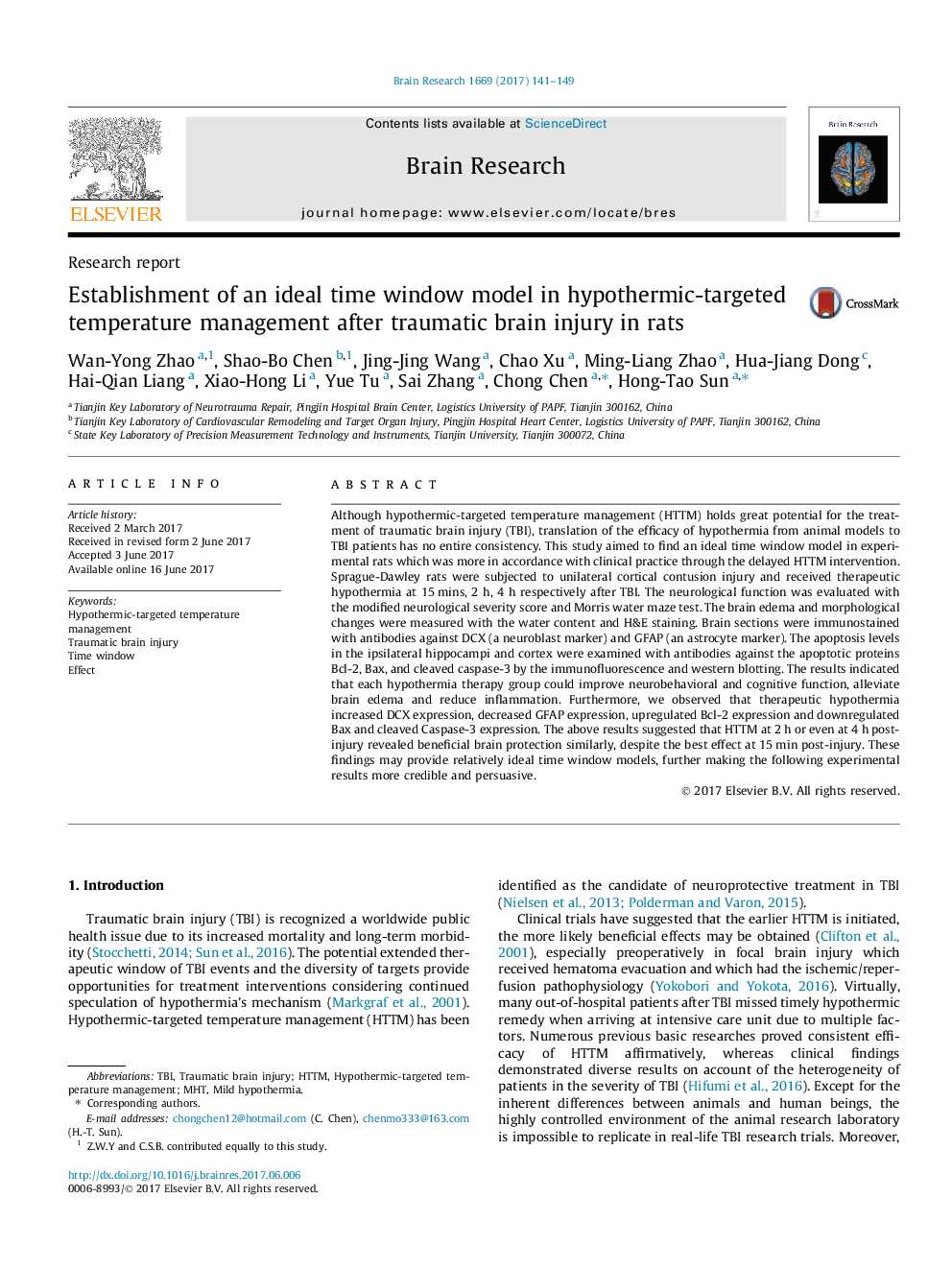| Article ID | Journal | Published Year | Pages | File Type |
|---|---|---|---|---|
| 5736748 | Brain Research | 2017 | 9 Pages |
Abstract
Although hypothermic-targeted temperature management (HTTM) holds great potential for the treatment of traumatic brain injury (TBI), translation of the efficacy of hypothermia from animal models to TBI patients has no entire consistency. This study aimed to find an ideal time window model in experimental rats which was more in accordance with clinical practice through the delayed HTTM intervention. Sprague-Dawley rats were subjected to unilateral cortical contusion injury and received therapeutic hypothermia at 15 mins, 2 h, 4 h respectively after TBI. The neurological function was evaluated with the modified neurological severity score and Morris water maze test. The brain edema and morphological changes were measured with the water content and H&E staining. Brain sections were immunostained with antibodies against DCX (a neuroblast marker) and GFAP (an astrocyte marker). The apoptosis levels in the ipsilateral hippocampi and cortex were examined with antibodies against the apoptotic proteins Bcl-2, Bax, and cleaved caspase-3 by the immunofluorescence and western blotting. The results indicated that each hypothermia therapy group could improve neurobehavioral and cognitive function, alleviate brain edema and reduce inflammation. Furthermore, we observed that therapeutic hypothermia increased DCX expression, decreased GFAP expression, upregulated Bcl-2 expression and downregulated Bax and cleaved Caspase-3 expression. The above results suggested that HTTM at 2 h or even at 4 h post-injury revealed beneficial brain protection similarly, despite the best effect at 15 min post-injury. These findings may provide relatively ideal time window models, further making the following experimental results more credible and persuasive.
Keywords
Related Topics
Life Sciences
Neuroscience
Neuroscience (General)
Authors
Wan-Yong Zhao, Shao-Bo Chen, Jing-Jing Wang, Chao Xu, Ming-Liang Zhao, Hua-Jiang Dong, Hai-Qian Liang, Xiao-Hong Li, Yue Tu, Sai Zhang, Chong Chen, Hong-Tao Sun,
